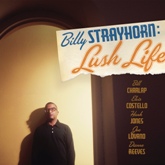Anyone who has more than a handful of jazz records in their collection probably has one Carter played on. It is just the law of averages, given his official Guinness world record as the most recorded jazz bassist. He also played with almost everyone, very definitely including Miles Davis (but not John Coltrane, as he himself points out during this doc). To a large extent, Ron Carter’s discography is a history of modern jazz, from hard bop to right now. At eighty-five he shows no signs of slowing down, except when it is mandated by Covid shutdowns. Peter Schnall documented the musician at work and during reflective moments, before and after Xi’s pandemic, in Ron Carter: Finding the Right Notes, which premieres Friday on PBS.
Carter has recorded as a sideman and a leader for both Blue Note and CTI, two jazz labels with radically different sounds. He also played on recordings by Roberta Flack, A Tribe Called Quest, Paul Simon and just about every major jazz artist. He was the first musician Davis hired for his “Second Great Quintet,” which many fans consider superior to the first. Not surprisingly, Carter speaks at length about his late boss, probably more than any other musician worked with.
Schnall obviously uses Dan Ouellette’s like-titled biography a road map, but his cameras recorded Carter during the painful moments, as they happened, in the wake of his son’s untimely death. On a happier note, he was also there to document performances celebrating Carter’s 80th and 85th birthdays. Of course, there was also the Covid shutdown.
Probably the best lessons aspiring musicians can take from Right Notes simply come from Carter being Carter. He is a paragon of professionalism, who demands the same of students and sidemen. Jon Batiste remembers how he learned that first-hand during his informal interviews with Carter. When the bassist talks, you should listen.
















